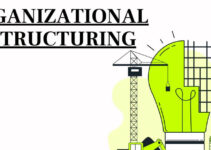Apple is an American technology and smartphone manufacturing multinational brand. Steve Jobs, Steve Wozniak, and Ronald Wayne set the grounds for the tech company in 1975. Today, we’ll discuss the McKinsey 7S Framework of Apple as McKinsey 7S example company; strategy, structure, system, staff, skill, style, and shared values of the tech brand as 7S framework in strategic management and change management.
Premium brand Apple’s main products and services are as follows;
- Apple One
- Apple Music
- Pay Apple
- Apple TV
- iPad
- Apple Store
- iCloud
- iPhone
- iPod
- Mac
- Apple Watch
- Card Apple
Apple’s subsidiaries are as follows;
- Beddit
- Claris
- InVisage Technologies
- Apple Studios
- Drive AI
- Beats Electronics
- Braeburn Capital
The statistical facts and figures of the tech premium brand are as follows;
- Tech brand Apple’s Network comprises over 526 retail stores worldwide
- Apple’s annual revenue in 2023 was 383.933 billion USD
- Out of which, the net income of the tech giant brand was 94.760 billion USD
- Apple has approximately 164,000 employees to manage its global operations
The top competitors and rival companies of the company Apple are as follows;
- Amazon
- One Plus
- Sony
- LG
- Microsoft
- IBM
- Dell
- Lenovo
- Samsung
- Huawei
McKinsey 7S framework of Apple as McKinsey 7S example company would analyze the 7S framework in strategic management and change management; strategy, structure, systems, staff, skill, styles, and shared values. Here’s Apple McKinsey 7S framework;
McKinsey 7S Framework of Apple
Let’s discuss McKinsey 7S framework of Apple as McKinsey 7S Example Company; the 7S framework in strategic management and change management are as follows;
Strategy of Apple
I-Differentiation
Apple implements a differentiation strategic approach with the objective of designing advanced tech features in its products. The brand has a unique competitive edge of being the first move in marketing by launching Macintosh with a graphical interactive interface, iPod that could store thousands of songs. The new and innovative products and devices justify the premium pricing strategy of Apple; because no other brand offers the similar quality that Apple offers.
II-Loop Network
Apple follows the strategy of developing a loop network among all of its products and tech devices; they could easily synchronize with each other. For an ordinary user of Apple, the brand switching cost is high, because they would have to change all the devices and products. It allows the company to develop a better relationship with its customers by offering all the relevant and similar products.
III-Diversification
Apple has successfully diversified its portfolio and it helped the company to decrease its reliance on the sale of one product iPhone. The company invested a significant amount of resources in research and development to increase its service portfolio. In fact, the company offers high-quality customer experience and it is the main element of their strategy.
Structure of Apple
I-Large Structure
Apple has a very large organizational size and hierarchical structure comprising over 161,000 employees and workers. The company gives them sufficient autonomy in decision-making at different levels of the company. However, the company’s structure comprises product-based teams and project-based teams; the company focuses on building collaboration and coordination among various units and divisions.
II-Functionality
The function of Apple’s structure is to make its product and project-based groups and teams effective and coordinate with other employees at the bottom of the organization. It also focuses on clarifying the reporting and supervising lines. However, the CEO of Apple is in charge of product, engineering, and marketing; the senior vice president of the company directly reports to him.
III-Control & Authority
The senior management has complete control over the company’s structure and, a clear line of authority within the company. The promotional opportunities boost the morale and confidence levels of employees. Some of the main flaws of this system are as follows;
- Ineffective communication
- Limited flexibility
Systems of Apple
I-Operations
The options of Apple comprise various systems like orientation, team development, performance appraisal, recruitment, and selection. The tech giant multinational company is highly reliant on the following systems;
- Knowledge management systems
- Business intelligence
- Transaction processing systems
II-Hiring Process
The hiring and recruitment process system Apple comprises of the following steps;
- Developing and announcing the job description and requirements in the pre-recruitment
- Screening the qualifications and expertise of employees
- Meeting and interviewing to determine whether they’re the right fit
- Conducting one-on-one interviews and engaging in role-playing activities
- Asking in-depth questions in the second interview
- Meeting the higher management at the third interview and asking technical questions
- Checking background by going through with law enforcement and questioning your references
III-Design
Apple puts a lot of emphasis on the product designing and product development process; there are various teams working on the project not to compromise on their focus. The company repeats the designing process throughout the manufacturing process. After reviewing and testing the process, the design team makes improvements to the existing design and starts the process all over again.
Staff of Apple
Apple is highly secretive and confidential about its workplace culture. The company has a very large database of employees; and offers opportunities for young graduates and experienced professionals. According to a survey study of Apple’s employees, approximately 80% of the employees have shared positive reviews and experiences about the company. Some of the main elements of Apple’s workplace and employees are as follows;
- Innovation and creativity
- Teamwork among employees
- Customer focused
- Continuous learning
Skills of Apple
I-Training Sessions
Apple regularly conducts training programs to improve the skill set and expertise of employees. The company hires both experienced and fresh candidates and offers them training and learning sessions to upgrade their skills.
Styles of Apple
I-Collaborative & Inclusive
Apple implements a collaborative culture and style among employees and the company’s leadership. The management connects with its employees, talks about the project and the role they working on, and how it could improve the end product.
Shared Values of Apple
I-Inspiring the Work
Apple’s value is to inspire the work by sharing with everyone. The company has shown a strong commitment to making the world a better place. Every member of Apple’s team contributes in a unique way, passionate about what they do best and what they believe in. It helps the company to make things possible when their personal and professional values become streamlined.
Conclusion: Apple McKinsey 7S Framework in Strategic Management |McKinsey 7S Example Company
After an in-depth study of the McKinsey 7S framework of Apple; we have realized that Apple is the world’s leading tech giant multinational premium brand. If you are learning about Apple McKinsey 7S framework in strategy management and change management; then you should keep in mind McKinsey 7S strategy analysis elements; structure, strategy, system, skills, style, shared values, and staff as McKinsey 7S example company.
Ahsan is an accomplished researcher and has a deep insight in worldly life affairs. He goes Live 3 days a week on various social media platforms. Other than research writing, he’s a very interesting person.


